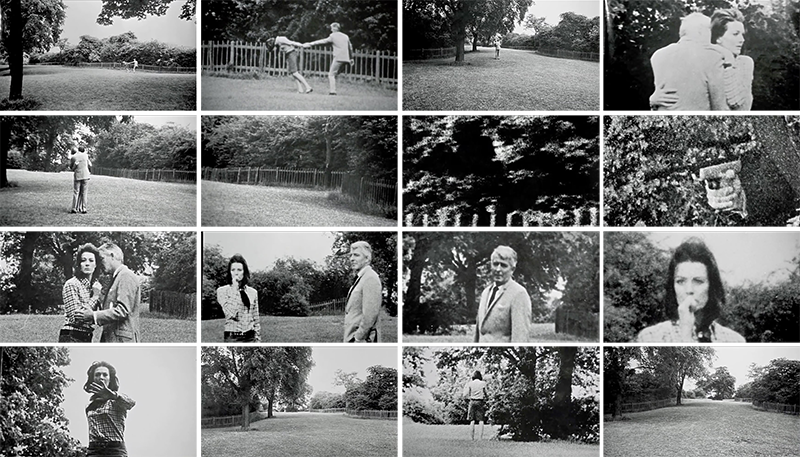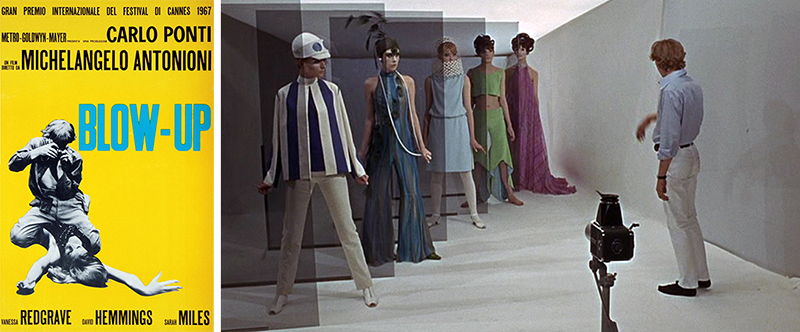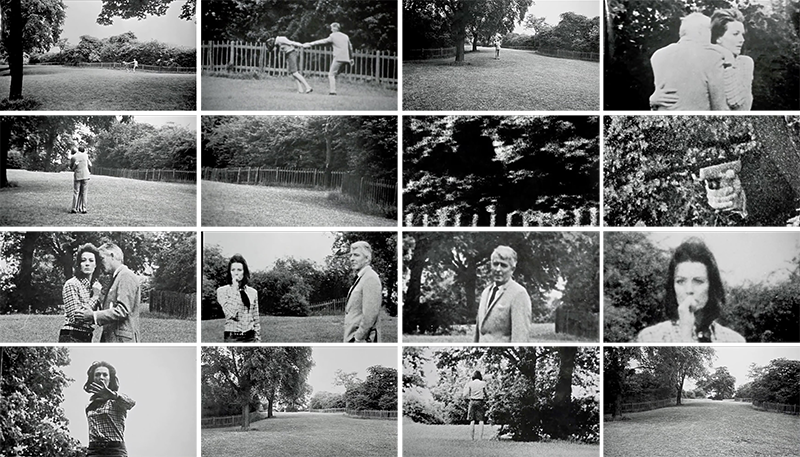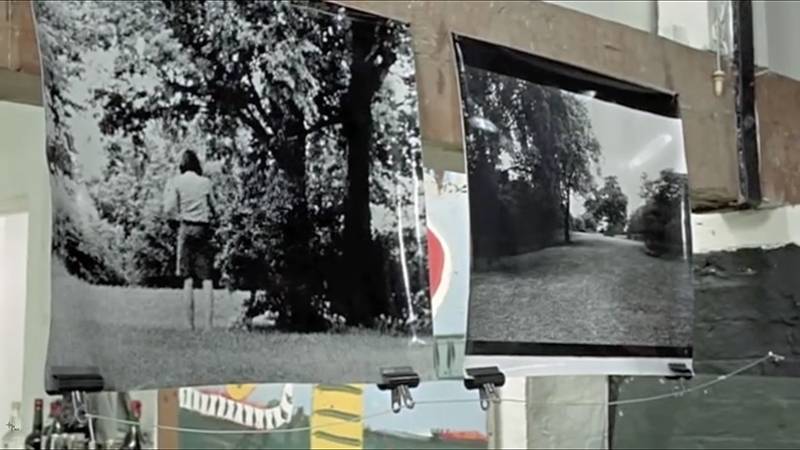Evidence • Media • Photography

November 17, 2017
Fake News: Blow Up
One of the pivotal scenes in Michelangelo Antonioni’s Blow Up (1966) follows the protagonist, Thomas, as he enlarges a series of images. From these close-ups, he determines he accidentally photographed a murder. The viewer must decide if these photographs are evidence of a crime or merely abstract forms? The core of this question touches on our need to assign narrative to any shape, pattern, and imagery we see.

Blow Up, Michelangelo Antonioni, 1966.
Antonioni addresses our concept of reality repeatedly through the film. Thomas, played by David Hemmings, is a successful fashion photographer in London. He photographs images that present a false and distorted truth. His neighbor is an abstract painter who talks about the ways of seeing with his work. A scene with mimes playing tennis reinforces the issue of actuality in what we see and perceive. Even the character’s name refers to doubting Thomas, Thomas the Apostle, the apostle who questioned the truth of Jesus’ resurrection.


Enlargement photographs, David McCullin photographer, Blow Up, Michelangelo Antonioni, 1966.
The enlargement scene at the center of the film forces the audience to engage in the conversation of a photograph as a representation of reality. We are conditioned to understand that a photograph is an honest record of an object, time, and place. Painting, on the other hand, can manipulate truth based on the artist’s choices. Setting aside the issue of photo manipulation, Blow Up posits that a photograph does not depict reality. A photograph is a collection of forms, grain or pixels, that create an image. When enlarged, the image is increasingly abstract and open to interpretation.
In 2014, people uploaded an average of 1.8 billion digital images every day. Today, in two minutes, people take more photographs than existed in total in 1866. In a culture flooded with this magnitude of imagery, the lines between truth and fiction are vague and confusing. Coupled with the ability to manipulate images digitally, the integrity of a photograph cannot be proven. The viewer must repeatedly determine on a daily basis if he or she believes the representation as actual or false. An uneasy and endlessly shifting sense of truth replaces the comfort of “seeing is believing.”
In 1966, Antonioni addressed the idea of reality and existential truth in the images we consume. The enlargement scene is an incredibly prescient vision that leads to the current climate of “fake news”, mistrust of the media, and refusal to acknowledge evidence of any issue that challenges a belief system.
Observed
View all
Observed
By Sean Adams




